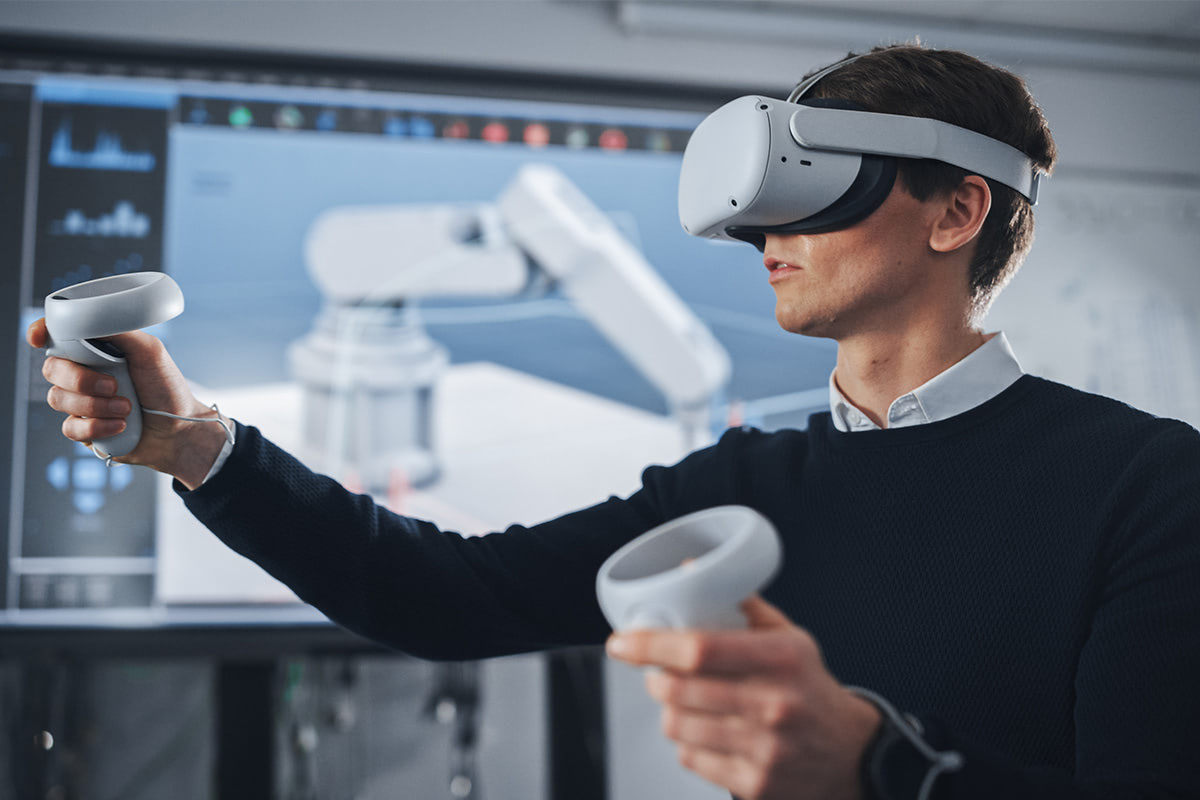A New Era of Extended Reality
The School of Arts and Sciences’ boot camp hosts students from different educational backgrounds to upskill them in virtual game design and development.
The past few years have witnessed a tremendous merge between technology, education and entertainment as a means of creating experiences that blur the lines between reality and imagination.
Among these revolutionary developments are augmented reality (AR), virtual reality (VR) and mixed reality (MR), all of which are transforming the way we interact with digital content.
Thanks to a grant from the U.S. Agency for International Development’s American Schools and Hospitals Abroad (USAID/ASHA), LAU some time ago acquired virtual reality headsets (Oculus II and HTC Vive Pro) and mixed reality headsets (Microsoft Hololens II). These high-tech tools would allow the university to expand experiential learning, an American best practice that dovetails with one of LAU’s strategic pillars.
Last month, students of all ages and educational backgrounds had a chance to benefit from an immersive experience during the X-Tended Reality Boot Camp held by the School of Arts and Sciences on the LAU Byblos campus. The boot camp aimed to educate students on the nuances of such technologies and their applications in gaming.
“Throughout the boot camp, I was mentored by skilled instructors in creating VR applications,” said 18-year-old Thea Zayek. “By the end of the boot camp, I was fully able to design my own game on the VR headsets,” she added.Students were instructed on the basics of C#, a popular programming language developed by Microsoft, and Unity, an engine and framework system for designing games, with the goal of creating and developing their own virtual reality projects.
The VR and MR headsets facilitated the visualization and application of 3D interactive animated scenes. These devices are amongst the most cutting-edge technologies out there that aim to recreate lifelike visual experiences surpassing those found on traditional computer monitors and smartphones. By employing computer vision and sophisticated graphics, VR systems generate immersive 3D images and videos that come to life with depth, scale and spatial relationships, in turn helping to transform static 2D images into dynamic and interactive simulations.
Upon learning C# programming and Unity, participants delved deeper into VR interaction by experimenting with VR environments, such as using virtually grabbable objects, crafting and editing prefabs and creating a fully interactive environment with tablets and panels.
“For the first eight days, we were there to guide them,” said Marc Aziz, a third-year computer engineering student who was responsible for providing the lectures alongside his classmate Dany Chaddad. “Afterward, they were able to prepare virtual material on their own,” Aziz said.
Aziz and Chaddad have been ardent fans of virtual reality for the longest time. As LAU students, they said, this experience gives them a professional chance to work with beneficial programs for their careers while encouraging the participants to study at LAU. It also helps them deepen their knowledge of ever-evolving XR.
Aside from their technical and partly entertaining aspects, XR and VR enhance student retention skills, given that the utilization of 3D objects in classrooms allows for multisensory learning, active engagement and improved spatial cognition.
For the future, SoAS Assistant Dean Robin Taleb aspires to continue integrating XR and VR into the school’s educational fabric because “as these technologies become more prevalent, they hold the potential to bridge the gap between theory and practice,” he said.
